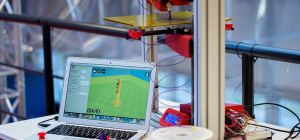 To call emerging is a bit of a misnomer for 3D printing or additive manufacturing as the technology has been around for about three decades. What’s interesting is that people around the world were expecting it to be in everyone’s living rooms by 2016 and people sitting on their couches will print 3D models at their own leisure and create their own products. None of this had quite happened in 2016 and we’re also halfway into 2017.
To call emerging is a bit of a misnomer for 3D printing or additive manufacturing as the technology has been around for about three decades. What’s interesting is that people around the world were expecting it to be in everyone’s living rooms by 2016 and people sitting on their couches will print 3D models at their own leisure and create their own products. None of this had quite happened in 2016 and we’re also halfway into 2017.
In fact, 3D printers are still extremely expensive for a common man to use. So, will the popularity surrounding 3D printing take a standstill? Can it never become mainstream? Can it never fulfill the promises it made and the revolution everyone believed it will bring in the supply chain market? Well, there are mixed answers to these questions and we have some statistics below to back this up.
People’s opinions and some popularity rise and fall
There were predictions about 3D printers being used in each household but the challenge is that people do not think they can use 3D printing in the same manner in which they use traditional printers or computers. However, there is more awareness on 3D printing than there was in previous years – so much so that this technology found its foot on famous shows like CSI and the Big Bang Theory.
Around five years ago, companies such as Bosch, Solidoodle and Makerbot invested a lot of money in producing desktop 3D printers to the consumer market claiming people could print models from their living room. The technology was still immature and awareness about the potential of 3D printing still not far spread. This immaturity coupled with cheaper models released in the market by Asian counterparts led to the decreased confidence in the technology in the minds of the consumers.
As a result of this, many other tech giants pulled out their investment from all the research and development that was planned in exploring the future of 3D printing. We have now reached a stage where all the hype around 3D printing and the sky-high aspirations people had with it has come to an end and there is more knowledge on what 3D printing can really achieve and how it can help supply chain industry and the consumer market better serve itself.
What’s next?
There have been many predictions as to what the future stores for 3D printers and whether they will ever become mainstream. Gartner predicts that by the end of the year 2018, there will be around 2.5 million 3D printers shipped worldwide and a majority of these will be consumer desktop 3D printers. Some of the biggest problems surrounding 3D printers are its complicated software, long response times in case of tech support by a consumer and sky-high prices.
To address these, a Taiwanese printer XYZprinting has come to the forefront and is working hard to produce cheaper range of desktop 3D printers with much simple software applications that are easy to install, supporting mass production to bring the gap between demand and supply and bring the prices down and also opening telephonic support through worldwide contact centres for quick and real-time response times.
Other software companies such as 3DPrinterOS and Autodesk are also working hard to improve the overall customer experience with 3D printing and their range of 3D printers to simplify their software and support connectivity among different 3D printers.
In some areas and walks of life, 3D printing is already mainstream. For prototyping purposes, many companies such as Adidas and Nike are making use of additive manufacturing to provide to their customers the customised and personalised experience. In the aerospace, automobile and healthcare industries, 3D printing is combined with computer-assisted machining to produce specialised spare parts for airplanes, spare parts for cars and prosthetics.
Conclusion
So, as mentioned above there are mixed studies where there is ample work in some industries that prove 3D printing is already mainstream and consumers are reaping the benefits of this fantastic technology. In other industries, there is a lot of work happening to overcome the challenges with 3D printing and its high costs, so it becomes more affordable and cost effective for others to adopt in days to come.
Will 3D printing ever become a household name and become every household’s printer. Maybe not! As the products you can possibly print with a 3D printer can range from small goods to big ones, it may not replace the traditional printer in every household but that does not mean you cannot start to find 3D printing stores in malls and shopping centres around you in some years where you can go with your requ9riements and print bulky items using the 3D printer. But till then, we all will have to wait with that lens and explore every possibility that 3D printing throws at us.
Contributed byhttps://www.infinity3dprinting.com/







